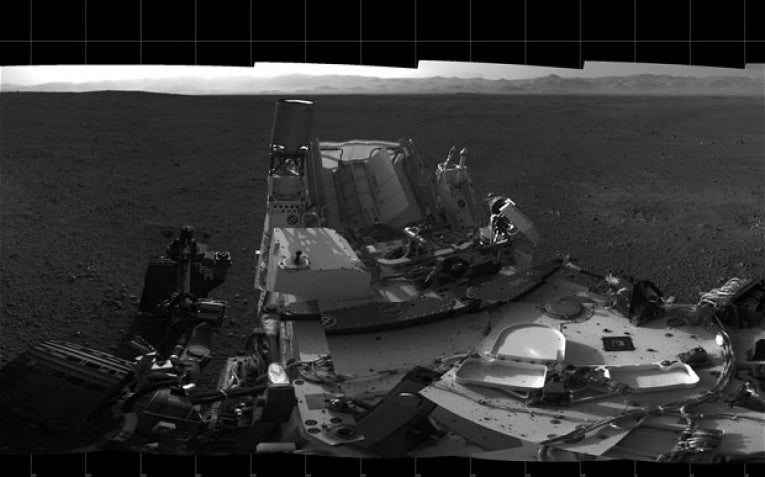Cruising the red planet for only 4.5-6.0m, Curiosity, the Mars Rover, will now be wiggling its four corner-wheels once more in anticipation. Although not allowed to wander free (because it takes much longer) the expeditionary vehicle is heading next for a spot called Glenelg, 400m away from its landing site.
The landing site is also to be named - Bradbury, after the science fiction author. We have to remember that the Martian day or sol is 40 minutes longer, with NASA times given accordingly!
We of course also need to know the weather, just like typical earthlings, so despite the only damage to Curiosity on landing, a Mars weather report from half of the original sensors is being arranged for a week or two's time.
In the last two weeks, it's been cold, as expected, but the climate will be interesting, as described by Javier GÃ ³mez-Elvira of the Centro de Astrobiologia, Madrid, Spain, principal investigator for the suite of weather sensors called the Rover Environmental Monitoring Station (REMS). He expects, "We will learn about changes from day to day and season to season." Russia is another country providing apparatus, - a useful hydrogen sensor which fires neutrons at the ground.

The location of DAN on the rover. This image of Curiosity shows the two components of the Dynamic Albedo of Neutrons instrument. The neutron generator is mounted on the visible right hip and the detectors are on the opposite left hip; Credit: © NASA/JPL-Caltech
This will find out whether water could have left hydrogen traces in hydrated minerals near the gale crater landing site. Water will have long since disappeared but these minerals retain the hydration.
Commands for the first real drive will have been transmitted so that the Curiosity Rover can move more quickly to Glenelg. Stationary since 5th August, the large vehicle has not been idle before today. The 10 types of instrument have been checked and operated, ready for the two-year mission. With the laser blasting rock already and photographing the results, it's not just landscape photography that Curiosity has been interested in. The rock is now reckoned to be a basalt type. Life on this planet is something we have always dreamt of. Curiosity is about to bring dreams to life, at least for many scientists.
I doubt if any other earthling would be disinterested in even the slightest sign of living organisms. There is no doubt that this could be bigger than that old Moon landing. It could be the start of a non-fiction "Martian Chronicles" (one of Bradbury's most famous books).
Here's the reaction of the Jet Propulsion Lab. At Caltech when the first drive was completed (Credit: NASA/JPL-Caltech):










